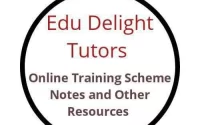Peace Education Civic Education Nursery 2 Second Term Lesson Notes
Civic Education
Nursery 1 – Second Term Lesson Notes
Week 8: Peace Education
Topic: Peace Education
Sub-Topic: Importance of Peace and How to Promote It
Behavioral Objectives
By the end of the lesson, pupils should be able to:
- Explain what peace is.
- State why peace is important.
- Identify ways to promote peace at home, school, and in the community.
Keywords
- Peace
- Cooperation
- Kindness
- Sharing
Set Induction
The teacher starts the lesson by asking:
- “What happens when you fight with your friends?”
- “Is it better to fight or to play nicely?”
Entry Behavior
Pupils understand that being kind and sharing with others makes them happy.
Learning Resources and Materials
- Picture cards showing children playing peacefully.
- Flashcards with the word Peace.
Building Background/Connection to Prior Knowledge
The teacher explains that peace means being kind, sharing, and living happily without fighting.
Embedded Core Skills
- Social awareness
- Communication
- Emotional intelligence
Content
What Is Peace?
- Peace means living without fighting or quarrels.
- It is when people are kind, share, and help each other.
Importance of Peace
- Peace makes everyone happy.
- It helps us play and work together.
- It allows us to learn and grow without fear.
Ways to Promote Peace
- At Home:
- Share toys and food with siblings.
- Listen to your parents.
- At School:
- Play nicely with friends.
- Avoid fighting or shouting.
- In the Community:
- Greet and respect neighbors.
- Help others when they need assistance.
Teacher’s Activities
- Show pictures of children playing peacefully and explain their behavior.
- Discuss the importance of being kind and sharing with others.
- Role-play a scenario where pupils share toys or resolve a quarrel.
Learners’ Activities
- Say what peace means in their own words.
- Mention one way they can promote peace at home or school.
- Participate in the role-play exercise.
Assessment
- What is peace?
- Mention two reasons why peace is important.
- List two ways to promote peace in school.
Evaluation Questions
- Peace means living without _______.
(a) Fighting (b) Dancing - Peace makes people _______.
(a) Happy (b) Sad - Sharing toys with friends promotes _______.
(a) Peace (b) Fighting - At home, you should _______ your siblings.
(a) Fight (b) Share with - To promote peace in school, we should _______.
(a) Play nicely (b) Shout at others - Peace helps us to _______ and grow.
(a) Learn (b) Cry - Saying “sorry” when you are wrong promotes _______.
(a) Peace (b) Quarrels - To make our community peaceful, we must _______.
(a) Respect neighbors (b) Shout at them - Peace is important because it allows us to live _______.
(a) Happily (b) Angrily - Helping others in need is a way to promote _______.
(a) Peace (b) Trouble
Conclusion
The teacher emphasizes that peace begins with every child being kind, respectful, and cooperative. Pupils are encouraged to practice peaceful behavior every day.
Home Task: Draw a picture of children playing peacefully.
Related
Related posts:
- Kinship Civic Education Nursery 2 – Second Term Lesson Notes
- Chieftaincy Titles in Nigeria Civic Education Nursery 2 Second Term Lesson
- Religious Institution Civic Education Nursery 2 Second Term Lesson Notes
- Second Term Mid Term Test Civic Education Nursery 2 Second Term Lesson
- Revision of First Term Civic Education Topics for Nursery 1
Related Posts
Second Term Mid Term Test Letter Work Nursery 1 Age 3 First Term Lesson Notes Week 6
Third Term English Grammar Nursery 1

3RD TERM EXAM QUESTIONS NURSERY I RHYMES
About The Author
Edu Delight Tutors
Am a dedicated educator with a passion for learning and a keen interest in technology. I believe that technology can revolutionize education and am committed to creating an online hub of knowledge, inspiration, and growth for both educators and students. Welcome to Edu Delight Tutors, where learning knows no boundaries.